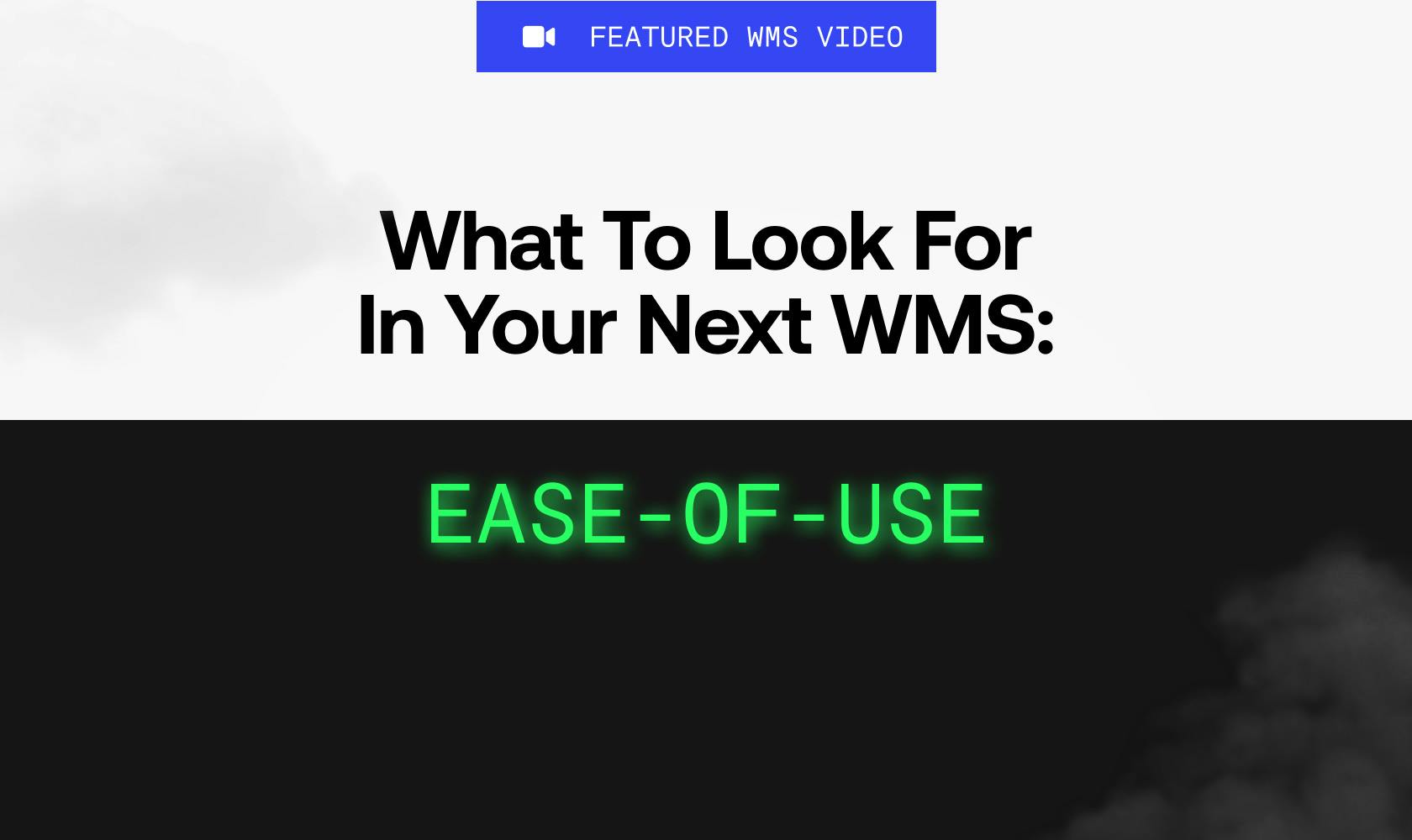This is the third in a series detailing the key capabilities any warehouse operator needs to manage its business efficiently and cost effectively. Prior posts have covered how to decrease your warehouse associate onboarding time and the power of a well-designed WMS user experience.
Subscriptions. It seems like everyone is offering them. From coffee brands to supplements to garden supplies, and more (even car manufacturers are exploring subscription options).
Brands love subscriptions. And it isn’t a surprise. Subscriptions for physical goods simplify deliverables down to a predetermined set AND (perhaps more importantly) allow for a business to predict and plan for sales with far greater accuracy. (And consumers love subscriptions too, as they ensure they won’t run out of their regularly consumable products.)
If you know your average churn and your average growth per month, then you can easily tell how much revenue you are going to make and product you’ll need with relative accuracy.
And while subscription models are effective, they are not as straightforward to manage as you might think.
Today’s blog post, and associated video, explores the complexities any warehouse operator – whether a brand with its own warehouse(s) or a 3PL supporting DTC fulfillment for brands – faces when trying to fulfill physical goods subscriptions, and how a modern warehouse management system (WMS) can make or break that business.
Don’t have a subscription business? Don’t worry, the below will be beneficial for you too.
Depending on your order flow and order components, different picking methodologies can be used. Let’s review some of these traditional approaches, and then highlight the ways a modern WMS can much more efficiently fulfill subscription-based orders.
One Batch Two Batch
When fulfilling subscriptions, an inefficient picking process can massacre your margins down to pennies and dimes. If these are handled as normal orders (aka discrete order picking), your warehouse team will spend far too much time picking all the items for one order, regardless of where the items are located, before moving to the next order.
This means if the subscription includes 3 different items, that picker will go to those 3 different areas for each order - great for their step goal, terrible for your efficiency.
Instead a batch picking process allows your WMS to identify and send a picker to gather multiple pieces all at once, for multiple similar orders. These items are gathered in item-specific totes, and then sent to a predetermined packstation that is equipped to assemble and pack each subscription box.
Each of these steps is married to a scan, which allows the WMS to provide the associate with the most critical information at each step, and can even include helpful product images.
Here is a simple example of batch picking in action:
1. Associate Bob is out on a batch pick.
2. WMS organizes a batch and floor path for maximum efficiency.
3. WMS directs Bob to Bin-01 and he picks 6 pieces of SKU A. Bob scans all items and places them in a dedicated SKU A tote.
4. WMS then directs Bob to Bin-05 and he picks the desired 12 pieces of SKU B. Bob scans all items and places in a dedicated SKU B tote.
5. Once complete, Bob delivers all totes to Associate Sally at a packstation.
6. Sally scans the tote to begin assembling the individual packages for each order. The WMS informs Sally what type of box to use and provides helpful images to ensure brand adherence.
7. Sally scans each item as she packs the box, and the WMS updates step-by-step and prints the label once the packing is complete.
Efficient. Effective. Beautiful.
Cluster Buster
Want the benefits of a batch pick but don’t want a complex packing process? Cluster picking is for you.
Cluster picking similarly leverages the WMS to determine efficient walking paths. But instead of gathering each item into specific totes and then passing it off to the packing station to assemble, the picker groups each order into order-specific totes, so all that is left is placing the items into the appropriate box and label.
This process, paired with a suitably robust WMS, allows for the associate to pick subscriptions that are similar but have some variance while maintaining efficiency in their footpath. Let’s run a similar scenario:
1. Associate Bob is out on a cluster pick.
2. WMS organizes the orders to be fulfilled and creates a floor path for maximum efficiency.
3. WMS directs Bob to Bin-01 and picks 4 pieces of SKU A. Bob scans all items and places each item into specific totes per order.
4. WMS then directs Bob to Bin-05 and he picks the desired 6 pieces of SKU B, and 3 of SKU C. Bob scans all items and places them in the specific tote per order.
5. Once complete, Bob delivers all totes to Associate Sally at a packstation.
6. Sally scans the tote. The WMS informs Sally what type of box to use and provides helpful images to ensure brand adherence.
7. Sally packages each order from each tote and labels them accordingly.
Cluster picking allows for your associates to bust out a ton of subscriptions while allowing flexibility per order.
SLIP And Slide
Now what if the subscription volume is extremely high, but most orders comprise the same one item? (Supplements and wellness brands tend to fall into this group.) That’s when your WMS can drive huge gains in efficiency and workforce productivity with Single Line Item Picking or what we call SLIPstreams.
In this instance, a picker goes to one spot, picks all of those single item orders, places them in a tote, delivers to a packstation and moves on. The packer then scans the tote and the station prints out all of the labels in one go. It’s then quick and easy for the packer to finish packing.
This process is designed for when a business has a need, a need for speed. And efficiency. But it only works when the SKU counts per order are low.
WMS Magic
A modern WMS is so much more than an inventory and order tracker. For subscription-based orders, you can rely on it to not only identify the most efficient walking paths and routes for pickers based on the specific style of picking they are tasked with, but also with automated rules to select specific pieces of inventory based on expiration dates, or prioritize orders based on channel, customer, delivery promises, etc.
While your whiteboards and Excel spreadsheets (or a jury-rigged ERP) may seem capable of managing your inventory and orders, you are forcing yourself to work in the dark ages, while those business with a modern WMS drive real tangible improvements in their efficiency, their mental health, and ultimately their bottom line.
Managing Subscription Based Orders with a Modern WMS Video Transcript
Whether it's you or your clients that have subscription-based orders, the WMS must have these following features.
If you're fulfilling health products, on a subscription basis, you want to make sure that your customer gets their product when they're expecting it. They don't want that delivery gap. They might either shop elsewhere or feel like their health is coming into decline.
Utilizing subscription based tools, slipstream, cluster picking and kitting will help you be able to fulfill these subscriptions for your customer.
In those situations, I need to be able to ship by batch.
Pick all of my twelve or ten or thirty orders all at one time, return those to a packstation, have them packed out accurately where every step has been scanned.
Cluster picking is great for subscriptions when you have multiple SKUs or products within that subscription. It can really increase your productivity.
Waving at this kind of level and this kind of efficiency would take your stream counts and stream handling times from hours out of your day down to just minutes.







